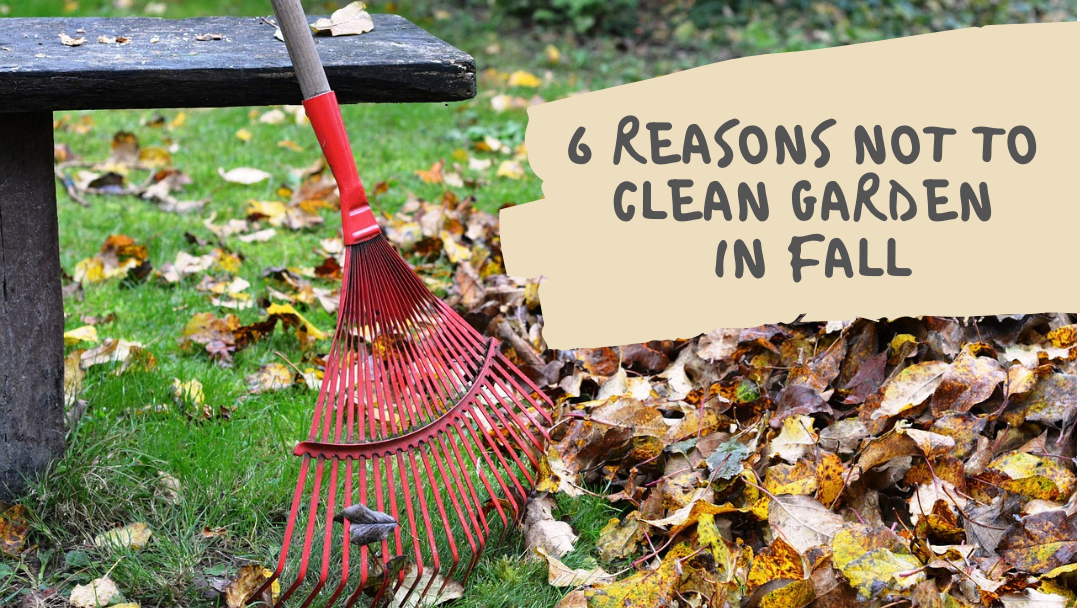This fall, I left all dried, deceased, and drooping plants uncut and undisturbed in my food garden on purpose. What do most of us usually do? We hurry up to remove all leaves and debris from the garden as soon as the cold autumn days approach, right? Are you nodding and smiling as you’re reading this?
Why do we tend to habitually run garden cleanup in the fall then?
- To make our gardens look pretty?
- To impress our neighbors to show them that we’re good owners?
- To make our yards aesthetically appealing?
- To prevent the accumulation of diseases and pests?
- To simply make our gardens clean because of being a clean freak?
- or To keep our soil healthy?
I have to ask you to pause at the last one and continue reading, as you might be surprised that delaying garden cleanup to the spring might be a better idea. Personally, I don’t clean my vegetable garden in the fall. Even more than that: I dump all types of organic materials into the garden to let them decompose over the winter and keep the soil shaded.
I believe letting plants lie or fade in place for winter is a good practice. Today I’m going to tell you why you should consider waiting to do your garden cleanup in the spring each and every year.
Plus……
You will learn these SIX Surprising Ways your soil, garden, and vegetables will benefit if you leave plant scraps on purpose and go hibernate over the winter:
1. Plant Residues Weaken Erosion And Loss of Valuable Topsoil
The first significant advantage of leaving plant residues in a garden is that they protect the soil from erosion and from losing the beneficial nutrients that were collected in the top eight inches of the soil. Yes, those eight inches that you have worked hard to enhance with your gardening efforts, the most treasured eight inches that were disturbed by developers when your house was constructed!
I speak of modern development practices when they remove all of the topsoils in new house construction. We must preserve those eight inches of topsoil as much as possible and deepen the layer of nutrients even further. Eight inches is the minimum that your plants require; but if you move to a newly built house and dig in your backyard, you might discover that the soil is insufficient to grow the food – even by four inches deep.
As you can see when you leave plant residues in place you protect the top layer of soil from both erosion and the loss of valuable nutrients.
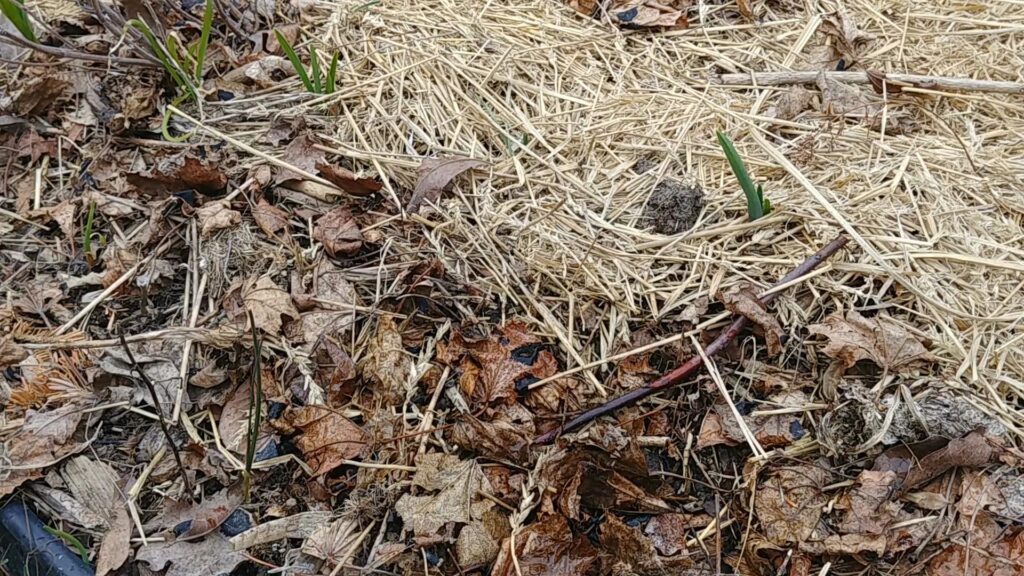
When I lived back in Ukraine, we used to turn over the soil twice a year. First, we tilled the ground in the spring before planting the crops to break down clumps formed during the winter. The second time was after harvesting to let the soil breathe over the winter and to help it retain snow and melted water. As vegetable gardeners, we always assumed that when you turn over the soil you speed up the decomposition of dead pieces of the plants and enrich the soil with beneficial nutrients; it was not a surprise to see the grounds of vegetable gardens staying exposed to all possible weather conditions. However, the soil back home is very fertile, having close to a neutral pH. As gardeners, we’ve taken all of these advantages for granted over several years of tilling and turning, harvesting, and leaving the soil open to erosion. Till nowadays you hear complaints about crops becoming less productive and people grumbling that the soil has become exhausted.
When my father was alive, he once asked me to dig a hole in the corner of the yard where he would bury rotten apples and apricots that had fallen from the trees. I asked him, “How deep do you want me to dig?”. He replied, “Maybe one meter deep would be enough”.
I started digging and removing the soil layer by layer. I remember the soil was black and fertile on the surface. The depth I dug was a one-foot layer of soil – the soil underneath was still black, rich, and drained well. I removed the second foot layer – the soil remained black, fertile, and nutritious. I removed the third foot layer – the soil was still as good as the top 8 inches!!!
So I thought to myself – no wonder it was easy to grow any vegetable crop in Ukraine with a good harvest…
However, here in Canada, the soil is very exhausted by origin, and we have to work very hard to build and retain valuable nutrients. Currently, erosion is the main reason why the soil is getting depleted, and wears the ground all over the world, no matter where you live.
That’s why the first thing we have to do is to shelter the soil from erosion.
When it rains, erosion makes the top layer of the soil compact, and that’s why we see the formation of crusts.
I encourage you to sit down with a cup of your favorite herbal tea and watch this video episode (started at 3:15 min) where I tried to explain in simple terms how erosion gradually weakens your soil.
Eventually, due to the work of the sun and wind, you will see wrinkles on the surface because the sun warms up the soil, making these crusts crack.
When the next rain comes, the water will have more chances to leak through these cracks.
The water will wash away all of these nutritional elements and materials that have been collected on the upper layers of the soil, those beneficial elements that you worked hard to preserve. In addition, the wind will hit the dust surface and blow away nutritious elements from the soil cracks.
Ultimately, we must foresee how the sun, rain, and wind work on the soil surface to minimize the dreadful impact of erosion.
Ralph C. Martin in his Food Security book shares very thoughtful advice to keep the soil covered:
So to keep the soil covered you have one of three options that help reduce erosion in your vegetable garden:
- Over-plant the garden beds so that the foliage shades out the exposed ground, protecting them from the rain and stopping the soil from getting compacted
- Spread out the mulch between the plants especially when the bigger patches of soil stay exposed, making sure to hide them
- Plant cover crops in between the growing seasons.
2. Plant Residues Cover Soil And Protect It During The Non-Growing Season
Residues catch raindrops, reducing the impact the individual droplets have on the soil surface. They also slow down the snow’s melting process so that the water will be released gradually into the top layers of the soil rather than immediately. Both of these actions help protect the soil structure and keep it intact for the next gardening period.
Watch this short episode on my video to see how I simulate the rain falling onto the surface of the plain ground versus the ground covered with the plant leftovers.
When the rain hits the ground, the drops bounce back and pretty much compact the soil surface. Compared with the rain hitting the covered soil, the water pretty much disappears in between all of the residues. As a result, the soil underneath is not damaged.

As C. Ralph Martin summarized in his Food Security book:
3. Plant Leftovers Prevent Soil Crusting
We have to preserve the soil’s ecosystem so that the bacteria, insects, and worms continue working as soon as the soil starts to warm up in the springtime.
You might have seen that during heavy rainfall, the soil stops absorbing water. Even worse, the rain droplets come back so much that there will be little streams flowing on the compacted surface and they join into the larger streams. These streams carry away the soil and its beneficial nutrients. When these nutrients have been wiped out, the soil starts to crack out, and the top layer hardens up, so it becomes like a pizza crust. That’s how the soil crust is created.
Plant residues will stop water streams from flowing. Instead, they form an imperfect sponge that collects and slowly releases water into the soil, which stays porous, not being compacted by the rains. All of these are good signs because it is precisely what your soil and plants need: the water does not flow all at once and carries away the most nutritious soil layer and does not absorb all water into the soil immediately and dries out the surface.
The plants like when the water slowly penetrates into the roots and delivers down nutritional elements. Plant residues collect the water and then slowly release the water like an irrigation system. That would be a natural irrigation system that helps plants grow and soil to keep the organic materials and steadily fertilize the soil.
You can see the soil crust pretty much on any open farming field that is exposed to the sun and rain without plants available. However, the soil crusting might happen on your gardening beds too.
For example, here is what I have observed at the beginning of 2020 when the community gardens were closed due to the public gathering restrictions. Usually in spring, as soon as the soil becomes workable, people clean up their plots. When the access to the gardens was restricted, lots of the plots stayed empty: clean but empty. Old plants were removed, new plants did not sprout yet. It was a period of the season when the ground was cold, even for the weeds to pop up! But, what I wanted to accentuate, there is no break for erosion to work. That’s why the soil crusting was formed on those empty plots.

4. Plant Residues Reduce Weeds By Covering And Shading The Soil
As you might have already noticed in your own yard, weeds often germinate first in the spring, earlier than most of your edible plants. They are resilient enough to germinate first even on the LEAST fertile soils. And residues suppress the growth of both – perennial weeds sprouting from under the surface and weeds that will grow from the seeds brought by the wind. The more your soil is covered with residues, the less soil will remain available for weed germination and development. Plant residues lessen the resources and space that weed seedlings require to grow.
Like any other seed, weeds need soil and sun to grow. The seeds of weeds that stay underneath the residues lose direct exposure to the sun, and their growth is slowed down. Weeds that fall from above will miss contact with the soil. Yes, they are warmed by the sun, but they won’t grow fast because they lack soil. So as you can see, #4 is a double benefit!
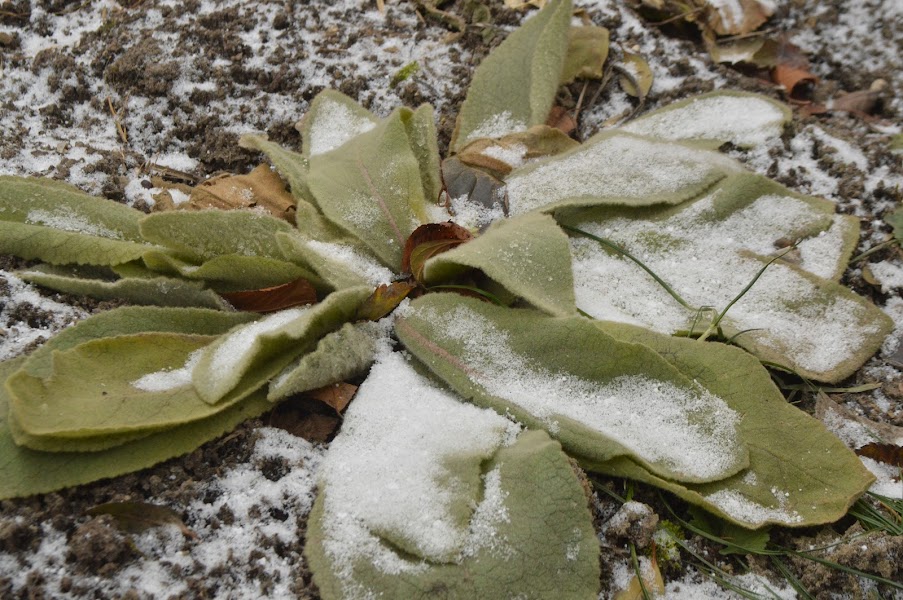
5. Plant Leftovers Create Shade, Regulating Soil Temperature
The presence of residues allows the soil to stay cooler during the non-growing season up to the early period of the new growing season. Cooler soil establishes more comfortable conditions for the soil microbes. Microbes are necessary for maintaining productive soil for crop growth. The microbes like to live in a moist and shady place, and that’s precisely what residues make. The cooler soil temperatures also help retain soil moisture, favorable for successful vegetable seed germination in the spring.
Your edible plants and seedlings love to live and prosper in the moist, even temperature, microbe-rich soil, and that’s the micro-bridge environment that plant residues provide.
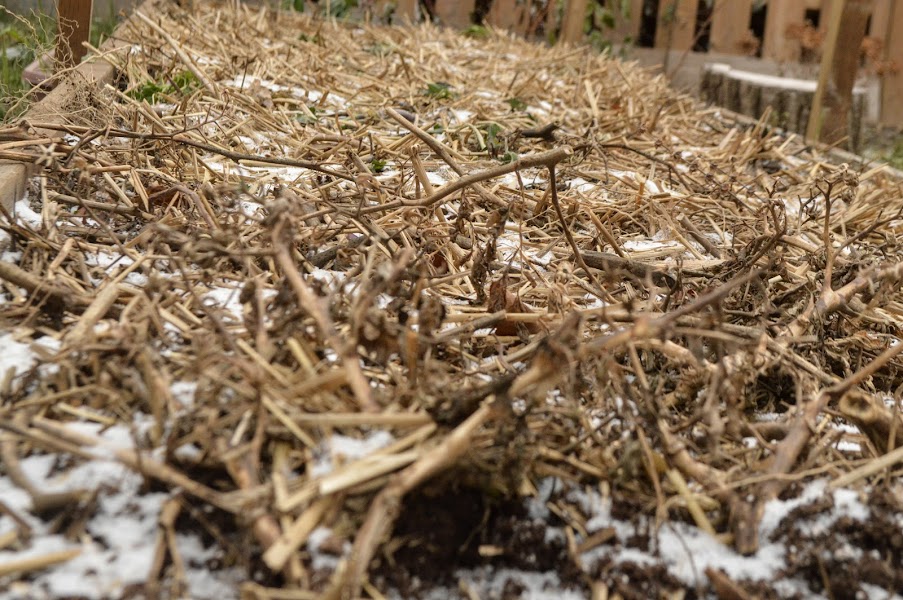
6. Plant Residues Arrange A Source Of Organic Material That Is Essential For Soil Health
Organic matter brings an energy source for soil microbial populations. It’s one of the reasons why I encourage you to leave the residues on the gardening beds. Because most people are just thinking, “Oh, it’s fungi and bacteria.” No, there’s a whole fleet of small insects and other arthropods that chew it up, partially digest it, and break it down, and then the bacteria and the fungi break it even further down to basically make the humic acids and things that we need in our vegetable gardens to reclaim good soils.
By removing dead plants, dried leaves as well as grass clippings, you’re making two mistakes. Number 1, you’re removing the food that all those organisms recycle. And number 2, you’re removing some nutrients from that. So just leave the residues there, and they’ll help fertilize your turf and grow all these organisms that make for healthy soils.
And if a branch falls off of the tree, you can leave it there, you don’t have to pick it up and throw it into the yard waste paper bag. Just leave it there, that will provide places for these helpful critters to hide. And food for them, and so forth.
Amazingly, certain plant species draw specific nutrients from deep in the soil and concentrate them in their bulbs and leaves. The long taproots dredge up potassium, magnesium, calcium, sulfur, and other minerals. As plants lose their foliage in the fall and become residues, the nutrients build up in the topsoil. When you keep these plants in your garden as recyclers, you reduce the need for purchased fertilizers.
From all available nutrient accumulators, here is the list of helpful herbs and vegetables that you should consider keeping in your edible garden:
- Chamomile
- Chives
- Egyptian Onion
- Fennel
- Garlic
- Strawberry
- Watercress
- Welsh Onion
- Yarrow
Soil organic hummus also helps cultivate the good structure of the soil itself. The soil becomes more porous and less compacted. Ultimately this further reduces erosion and improves water infiltration and soil aeration. In addition to composting, kitchen scraps allow your plants to decompose where they sit in the wintertime. In the fall, you may cut the tops off a few vegetables and flowers, dropping them right in their place of living. But the roots remain, aerating the soil and helping to create conditions that keep weeds and pests at bay.
That’s pretty much what I wanted to tell you about the benefits of leaving the plant residues in place.
At the end of the day what I’m going to clean is pretty much all of the old plants that stick up from the soil, and even then, I will consider what plants to cut and what plants to pull out because the roots of the old plants will serve as the channels for the water to infiltrate into the soil.
To realize a perspective of how deep and wide they can deliver the water have a look at the root systems of these vegetables shown to scale:
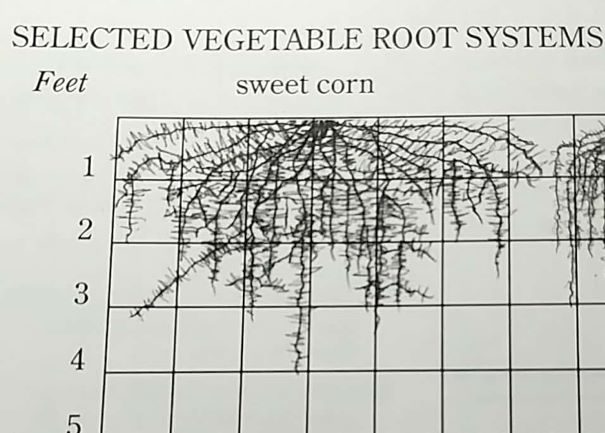
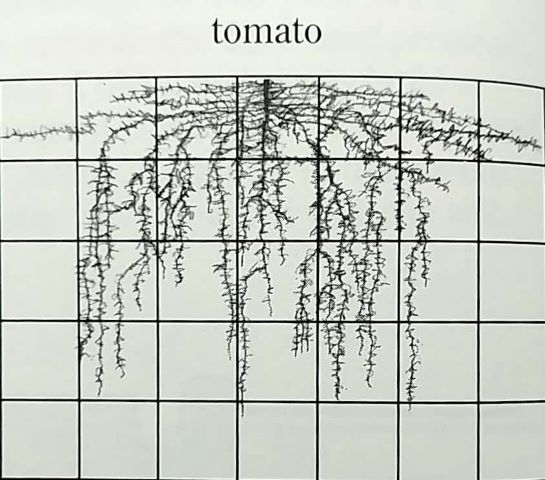

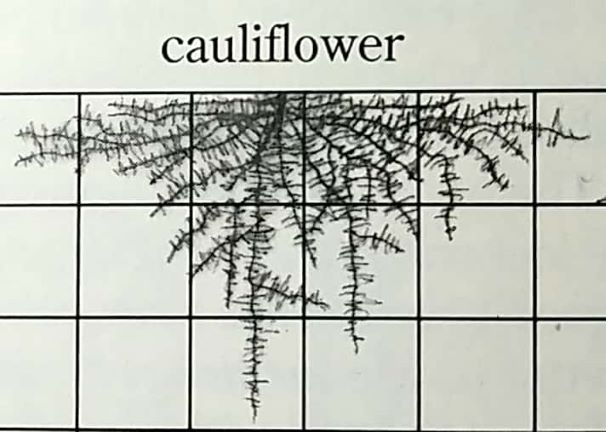
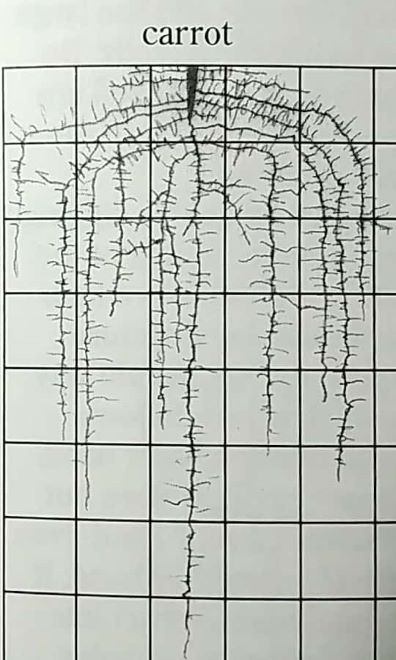
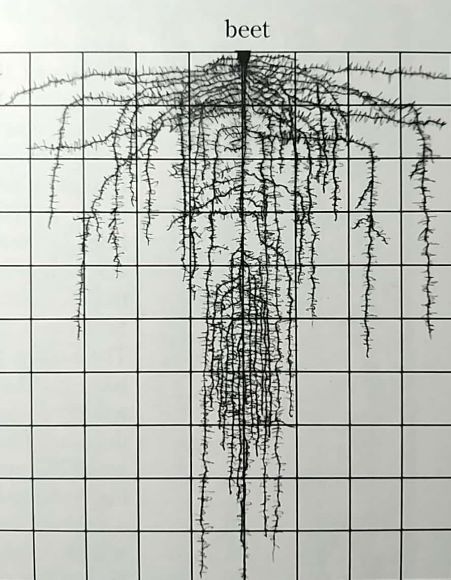
Logically speaking, the fewer plants we pull out from the garden in the fall, the more abundant presence of root hairs we leave. And when the rains water the ground and snow melts, more water and nutrients will be delivered into the depth of the soil, making the soil more fertile.
If you’d like to review the above SIX tips and realize again why as a “lazy gardener” you should delay all garden cleaning to the spring, check out my video:
This leads us to the next chapter, which is pretty much the know-how of vegetable garden cleanup. If you are interested, please leave your comment below.
P.S. I’d love to invite you to join my online community if you feel inclined.

